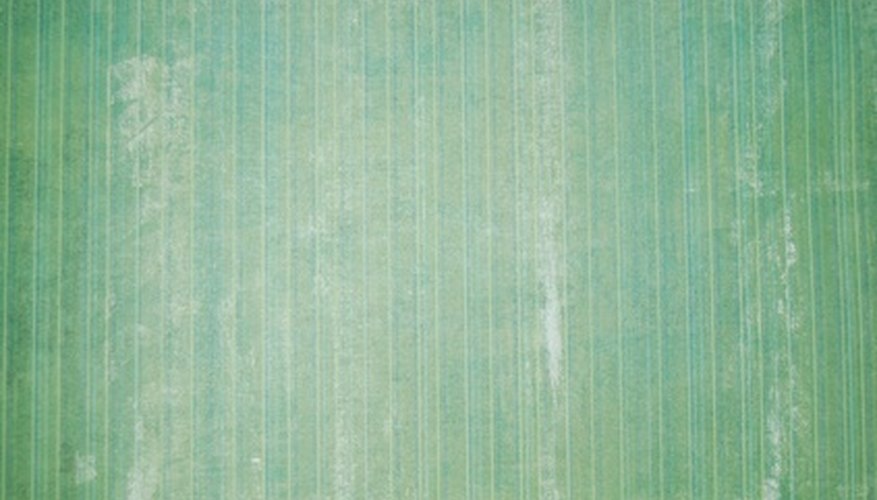Removing wallpaper can sometimes seem an impossible task. The only telltale sign that you painted over your stubborn wallpaper will be the seams--but with some extra work, you can hide those. As long as the underlying paper is adhering tightly to the walls and you disguise the seams, the paint job will make the surface look like a regular painted wall.
Glue the Seams
All the seams need to be glued very tightly to the underlying wall. You're in luck if the paperhanger used seam adhesive, a glue that's applied just to the seams to keep them in place. If so, the seams should be well-adhered. Check all the seams. If any look loose, purchase some seam sealer---it comes in a tube with a small nozzle so you can squirt a little under the seam. No matter how careful you are with subsequent steps, a loose seam will show in your final work.
- All the seams need to be glued very tightly to the underlying wall.
- You're in luck if the paperhanger used seam adhesive, a glue that's applied just to the seams to keep them in place.
Priming an Essential Step
You must prime over wallpaper with oil- or shellac-based primer before repairing or painting it. Some wall coverings have dyes or pigments in the pattern that can bleed through water-based latex paint. Water-based paint will soak through the paper and cause it to bubble up everywhere that it's not tightly adhered to the wall; this is most likely around the seams. Repair materials like spackle and joint compound are water-based as well, so prime before you do any repairs.
- You must prime over wallpaper with oil- or shellac-based primer before repairing or painting it.
- Water-based paint will soak through the paper and cause it to bubble up everywhere that it's not tightly adhered to the wall; this is most likely around the seams.
Covering Seams
If you are going for a smooth wall look, you'll need to "float" the wallpaper seams. This means applying drywall joint compound over every seam and sanding it smooth. Apply at least two coats of joint compound, allowing it to dry for four to eight hours in between coats. Apply the final coat with an 8- or 9-inch drywall knife, which allows you to sand it flush to the surrounding surface. Prime the repaired areas after sanding them.
- If you are going for a smooth wall look, you'll need to "float" the wallpaper seams.
- Apply at least two coats of joint compound, allowing it to dry for four to eight hours in between coats.
Double-Checking Your Work
Double-check the joint compound job after you've sanded and primed it. Air bubbles, ridges you missed with the sander and little scratches will be more apparent after priming. Put another coat of joint compound over imperfections, and prime it again after it's sanded. To make it easier to see the difference between white primer and white drywall compound, have the paint store add just a little tint to the primer so it's a different colour.
- Double-check the joint compound job after you've sanded and primed it.
- Air bubbles, ridges you missed with the sander and little scratches will be more apparent after priming.
Texturing Over Wallpaper Seams
Avoid all the fussy sanding and smoothing by putting a texture over the walls after priming them and repairing obvious flaws, crack and holes. Spraying texture is an extremely messy job, but it's very fast. You can rent all the necessary equipment, or buy the hopper and nozzle if you already have an air compressor. A hand-applied Venetian plaster or Mediterranean texture is quite easy to do, although it will take a bit longer than spraying. Once textured, nobody but you needs to know there are wallpaper seams under the finished job.
- Avoid all the fussy sanding and smoothing by putting a texture over the walls after priming them and repairing obvious flaws, crack and holes.
- A hand-applied Venetian plaster or Mediterranean texture is quite easy to do, although it will take a bit longer than spraying.
